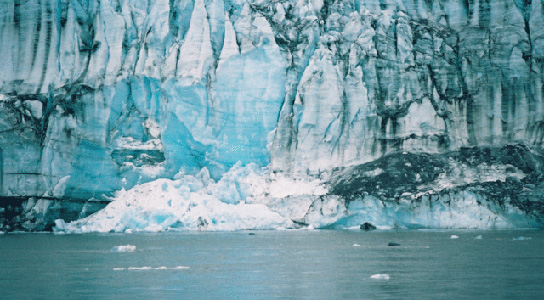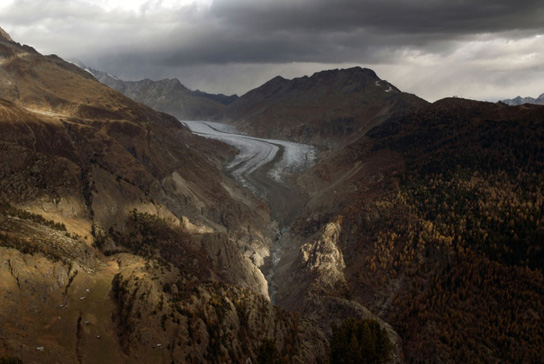Rapidly Retreating Glacial Ice Leaves Species Threatened
March 12, 2012

The rapidly disappearing glaciers are altering more than the physical landscape, as a recent analysis suggests. Species that live in streams and rivers that flow from melting glaciers could start disappearing when half of the glacial cover in a region is lost.
A team of scientists looked at the diversity of insect larvae in water at 103 different sites that were fed by glacial waters in the Ecuadorian Andes, the European Alps and Alaska’s coastal mountains. They compared the number of species to the percentage of glacier cover in the catchment areas.

In areas that had high glacial cover, several species will start to disappear when the cover drops to 50%. If the glaciers in all three different regions were to disappear, between 9 and 14 species would be extinct, representing 11% of the biodiversity in Ecuador, 16% in the Alps and 38% in Alaska.
Many small invertebrates are restricted to this kind of environment and their findings were published in Nature Climate Change today.
Alpine invertebrates are somewhat of a neglected area of study, and it’s only recently that the effects of climate change are being properly discovered. Conservation options for species that have such limited and specific ranges are problematic, since relocation and habitat restoration aren’t applicable. It’s something that can’t be done on a local level.
Many of the world’s glaciers are retreating and a study estimates that the tropical glaciers in Mexico and South America have already retreated by 30% since the mid-1980s. A different analysis suggests that most of the world’s smaller glaciers will disappear by the year 2100.
In Ecuador, they retreat by about 15 m per year.
No comments:
Post a Comment